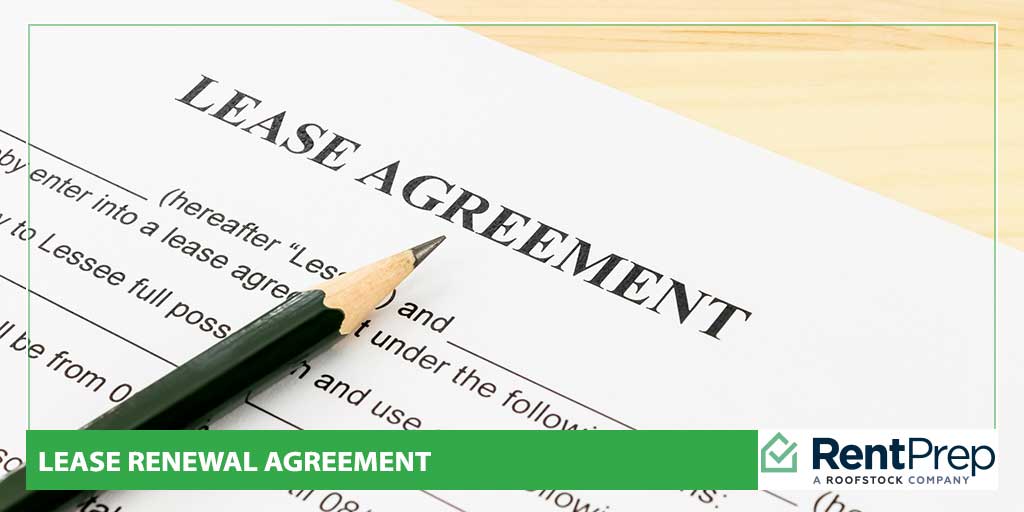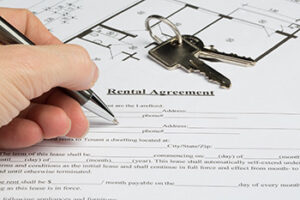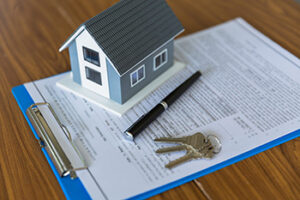
As a landlord or property manager, you will have to deal with rental or lease renewal agreements on occasion. Every rental lease agreement has a fixed term. The most common fixed terms are monthly (rental agreements) and annually (leases).
Many leases begin as an annual agreement that turns into a month-to-month agreement if the annual lease is not renewed.
Renewing a rental agreement makes sense in many cases where you want to update the terms of the tenancy, have an ongoing agreement on hand, or simply document the continuation of the tenancy. Even if you know why you want to renew a lease, you might not know how.
Today, we’ll show you a rental lease renewal agreement sample and give you a walk-through about why and how to use this form.
A Table of Contents for Lease Renewal Form
- All About the Lease Renewal Agreement
- Ask a Property Manager – Lease Renewals
- Landlords Don’t Have to Renew a Lease Agreement
- Deciding to Renew the Lease Agreement
- Sample Lease Renewal Agreement Template
- Final Tips & Notes
All About the Lease Renewal Agreement
Either party to a lease, the renter, or the landlord can initiate a lease renewal agreement. Of course, after 12 months, a lease renewal is pretty automatic: It either kicks off another annual lease or it turns month to month.
Generally speaking, leases are often renewed with both parties who are happy to extend the relationship with similar terms.
Occasionally, a renter may need to move to another area at the expiration of a lease or she may want to move to a place where the rent is cheaper. In those cases, a renewal would not be necessary.
You only need to complete a lease renewal agreement whenever you want to set up a new period of rental because the tenant will be staying at the property, or you want to make changes to the rent when the property reaches the end of the lease.
Ask a Property Manager – Lease Renewals
At the beginning of this video, we discuss how to handle lease renewals and then at the 10:20 mark we discuss how to increase rent at renewal time.
Watch to learn what an experienced property manager had to share with us.
Landlords Don’t Have to Renew a Lease Agreement
However, once in a while, you may not want to continue the agreement.
At the time of lease renewal, you can simply refrain from offering another one-year lease and let the lease convert to a rental agreement on a month-to-month basis, per the original terms of the lease.

Alternatively, if you don’t want to go down that road because you believe it would be in your best interests to have the tenant move out, you can simply refrain from offering a new lease and you do not have to have a reason. Simply do not extend the term or offer a new lease.
By not extending the lease, you can ensure that you will regain possession of the property soon. Unless you included an automatic extension in the original lease agreement, you are in no way obligated to allow the tenant to continue to rent your property.
There will be cases where a tenant tries to stay on the property without a lease renewal. If this happens, you should serve a notice to vacate because they are no longer permitted to be on the property. If they do not leave, you can then file for eviction according to your local and state laws.
Reasons You May Not Want to Continue the Lease
There are many reasons you may not want to extend a new offer.
Perhaps the tenant was late on rent frequently, and you just do not want to deal with that for another 12 months. Or maybe he played his music too loud and bothered his four nearest neighbors. Losing four tenants is far worse than losing one.
It will be much easier to raise the rent to market levels with a new tenant than with an existing one, so that could play a part, too. If the current tenant is unable or unwilling to pay a higher rate when you renew the lease, you may choose to not renew the lease at all.
Of course, your tenant could turn the tables on you and tell you that he does not wish to renew. That is perfectly acceptable. He may want to move to the other side of town, or perhaps he got a new job that takes him far away. Or maybe he wants to save money on rent by moving elsewhere.
Obviously, there is a myriad of reasons for not renewing a lease, from both the landlord and tenant’s standpoints. No matter what the reason is, remember that neither party is required to continue with a lease renewal unless it was included in the original lease.
Deciding to Renew the Lease Agreement

If both parties decide to renew, make sure that you don’t just step through the motions. You should modify the lease appropriately (with higher rent, for example); don’t just re-sign a new lease without reading it in full and understanding that some things must change before a new lease is signed.
As you can see, the process of a lease renewal agreement is fairly straightforward. Do not get caught up in the nuances, but certainly read your leases in full and know what you can and cannot do from a legal standpoint.
Rather than rewrite the entire original lease, you can use that lease as a base document to continue your relationship with the tenant. The renewal form will allow you to use that document as the terms and rules that the new lease period will still need to follow. The renewal simply highlights that fact and allows room for any changes that either party wants to make.
Sample Lease Renewal Agreement Template
Now that you know the situations in which you might be signing a lease renewal form with your tenant, take a look at our template to gain some more knowledge about the specifics of what should be included in a renewal form:
| Lease Renewal Agreement |
We’re going to break down each piece of information that needs to be included in this form and why. With these notes, you should be able to renew any lease with confidence. Remember, you can always make adjustments and add more specifics in as needed to any renewal form!
Parties
This section of the renewal form identifies all parties that are involved in the original lease and in the lease renewal. The landlord’s full name, as well as the full names of all tenants, should be clearly listed.
All of this information needs to be included to clearly identify who will be involved in the lease. Even though all of the names are the same as the original lease, they must be re-identified here for clarity and conciseness.
Premises
Next, you must list the property address and type of property. This should be listed identically as it was in the original lease unless there was an address change since it was originally signed.
Original Lease Information
This section identifies the original lease terms. While it is not necessary to list out everything that was in the original lease, it is important to mention some specific details:
- Date of original lease
- Names of people on the original lease
- When the original lease expires
Additionally, your lease renewal form should clearly state that all parties have agreed to incorporate the original lease terms as amended in this renewal. The original lease must be attached to this lease since the terms and policies outlined in that lease will still apply.
If you do not attach or reference the original lease when doing a renewal, you run the risk of the terms and policies originally being agreed upon becoming lost. It is essential that you keep the original lease alongside the renewal to protect your business.
Renewal Conditions (Rent, Payment Date, etc.)
This section focuses on outlining the conditions surrounding the renewal. Here, all parties have the opportunity to ask for specific changes or amendments to happen. As long as these changes are clearly explained and signed off through this renewal form, they can be applied to the original lease.
Specifically, be sure to include any updates to these areas:
- New effective date of renewal
- Renewal period
- Rent changes, if applicable
- Rent payment date, if applicable
- Changes in tenants, if applicable (i.e., new husband moves in)
- Other relevant changes to terms or policies
It is essential that you document any changes made to the agreement. While verbal rental agreements are valid in most states, having a written agreement is more secure for all parties involved.
Additionally, it gives you a clear reference of everything that you and the tenant agreed upon, so you can use it to help clear up any simple disagreements by simply using the clauses as evidence one way or another.
Signatures
Finally, you and all relevant parties must sign the lease renewal form to make it valid. Without signatures and dates, this updated document will be irrelevant and not legally binding. Be sure that after the document is complete, both you and the tenant keep a copy of the completed form on file.
Final Tips & Notes
We hope that our rental lease renewal agreement sample has helped you to understand more about what a lease renewal form does and how you can easily use one to update your agreements when the original lease period is ending.
Remember, you do not always have to use this form, but updating it and having it on hand is a better way to protect your business from the risks of the rental industry. Using this form can help you keep your properties profitable and manageable for years to come.
Photo credit: Florida Real Estate Lawyer Blog

